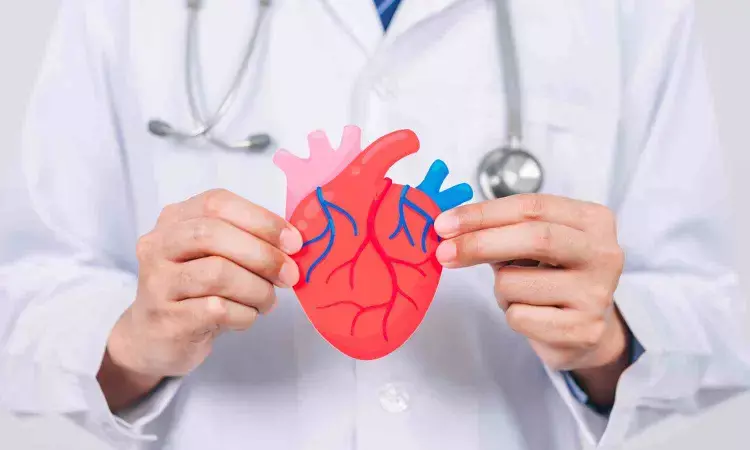- Home
- Medical news & Guidelines
- Anesthesiology
- Cardiology and CTVS
- Critical Care
- Dentistry
- Dermatology
- Diabetes and Endocrinology
- ENT
- Gastroenterology
- Medicine
- Nephrology
- Neurology
- Obstretics-Gynaecology
- Oncology
- Ophthalmology
- Orthopaedics
- Pediatrics-Neonatology
- Psychiatry
- Pulmonology
- Radiology
- Surgery
- Urology
- Laboratory Medicine
- Diet
- Nursing
- Paramedical
- Physiotherapy
- Health news
- Fact Check
- Bone Health Fact Check
- Brain Health Fact Check
- Cancer Related Fact Check
- Child Care Fact Check
- Dental and oral health fact check
- Diabetes and metabolic health fact check
- Diet and Nutrition Fact Check
- Eye and ENT Care Fact Check
- Fitness fact check
- Gut health fact check
- Heart health fact check
- Kidney health fact check
- Medical education fact check
- Men's health fact check
- Respiratory fact check
- Skin and hair care fact check
- Vaccine and Immunization fact check
- Women's health fact check
- AYUSH
- State News
- Andaman and Nicobar Islands
- Andhra Pradesh
- Arunachal Pradesh
- Assam
- Bihar
- Chandigarh
- Chattisgarh
- Dadra and Nagar Haveli
- Daman and Diu
- Delhi
- Goa
- Gujarat
- Haryana
- Himachal Pradesh
- Jammu & Kashmir
- Jharkhand
- Karnataka
- Kerala
- Ladakh
- Lakshadweep
- Madhya Pradesh
- Maharashtra
- Manipur
- Meghalaya
- Mizoram
- Nagaland
- Odisha
- Puducherry
- Punjab
- Rajasthan
- Sikkim
- Tamil Nadu
- Telangana
- Tripura
- Uttar Pradesh
- Uttrakhand
- West Bengal
- Medical Education
- Industry
SGLT2 inhibitors and GLP1 receptor agonists combo tied to additional heart and kidney benefits: Lancet

New research shows combined use of sodium glucose co-transporter 2 inhibitors (SGLT2is) and glucagon-like peptide-1 receptor agonists (GLP1-RAs) is likely to offer additional protection against heart and kidney disease in patients with diabetes. Findings were published today in The Lancet Diabetes & Endocrinology and presented in May at the 61st European Renal Association Congress in Stockholm, Sweden.
SGLT2is, also called gliflozins, are a class of drug that lower blood glucose by increasing its excretion in the urine, while GLP-1RAs, such as Ozempic, work by enhancing insulin release and sensitivity. Both classes of medicine have each been shown to improve cardiovascular outcomes. Although small, relatively short-term trials have suggested that using these medicines together improves blood glucose control, their combined effects on heart disease and kidney failure are less clear.
Researchers involved in the SGLT2 Inhibitor Meta-analysis Cardio-Renal Trialists’ Consortium (SMART-C) pooled data across 12 large-scale, placebo-controlled trials of SGLT2is involving 73,238 patients with diabetes, 3,065 of whom were already receiving GLP1-RAs. The meta-analysis showed that the benefits of SGLT2is were observed independent of GLP1-RA use.
SGLT2is reduced the risk of major adverse cardiovascular events (myocardial infarction, stroke, or cardiovascular death) by 11% and hospitalisation for heart failure or cardiovascular death by 23% versus placebo, even when added to GLP1-RAs. SGLT2is also reduced the risk of chronic kidney disease progression by 33% when added to GLP1-RAs and slowed the annual loss of kidney function by almost 60% when added to GLP-1RAs. No new safety concerns were identified when SGLT2is and GLP-1RAs were used in combination.
Clinical Associate Professor Brendon Neuen, Senior Research Fellow at The George Institute for Global Health, Director of Kidney Trials at Sydney’s Royal North Shore Hospital, and lead author on the paper said, “Given the rapidly expanding indications for the use of GLP-1 receptor agonists, it was important to look at their effects with SGLT2 inhibitors. This study represents the largest and most comprehensive assessment of clinical outcomes for this combination of medicines.”
A/Prof Neuen added that both classes of medicines work independently of each other: “SGLT2 inhibitors have clear protective effects against heart failure and chronic kidney disease, while GLP-1 receptor agonists can reduce the risk of heart attack, stroke, and also kidney disease - as recently demonstrated in the landmark FLOW trial. Our findings support using this combination to further improve outcomes in patients with type 2 diabetes who meet guideline recommendations for both therapies.”
Diabetes is a known risk factor for cardiovascular and kidney disease, with impaired glucose control causing damage to blood vessels in the heart and kidneys. Many patients with diabetes live with cardiovascular disease or chronic kidney disease, with prevalence increasing in the years following a diabetes diagnosis.
SMART-C is co-chaired by A/Prof Brendon Neuen and Prof Hiddo Heerspink of The George Institute for Global Health.
Reference:
Carlos Escobar Cervantes, SGLT2 inhibitors and GLP-1 receptor agonists: the definitive combination?, The Lancet Diabetes & Endocrinology, https://doi.org/10.1016/S2213-8587(24)00183-9.
Dr Kamal Kant Kohli-MBBS, DTCD- a chest specialist with more than 30 years of practice and a flair for writing clinical articles, Dr Kamal Kant Kohli joined Medical Dialogues as a Chief Editor of Medical News. Besides writing articles, as an editor, he proofreads and verifies all the medical content published on Medical Dialogues including those coming from journals, studies,medical conferences,guidelines etc. Email: drkohli@medicaldialogues.in. Contact no. 011-43720751


